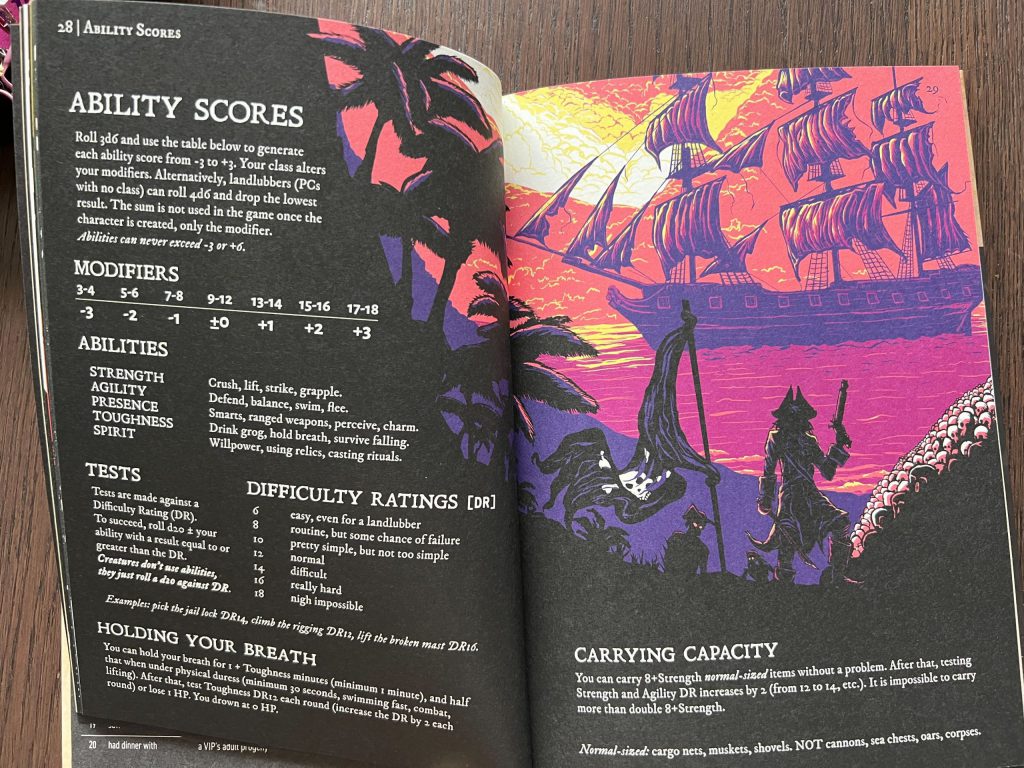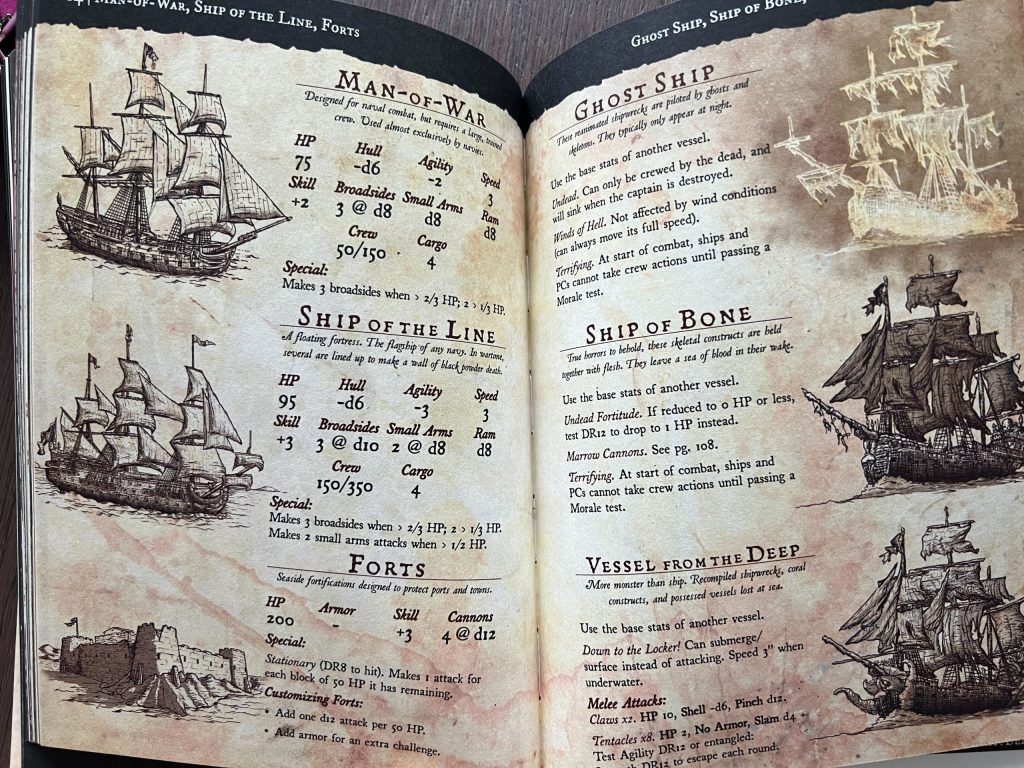Pirate Borg explained
If you’re looking for a rules-light, dark Caribbean TRPG setting, one that takes place in the time of piracy but is littered with the undead, the monstrous and the eldritch, then look no further than Pirate Borg.
Pirate Borg is, when it comes down to it, a new setting for the rules-light, ‘cool table’ heavy, Mörk Borg system. For many people, that’s surely more than enough information to make a decision on the game, but for others, you’ll have noticed that I described it as a setting and not a greater, wider system. That’s because Pirate Borg ultimately plays within the boundaries of Mörk Borg’s simple rules… and, as it well should, because its predecessor’s simple rule set was almost perfect, and makes for a fine skeletal structure to this new, fleshy beast.
Surely, if it’s not broken, don’t fix it. That seems to be the Pirate Borg way.
In fact, on a rules perspective, the only foundational change is the addition of a fifth character ability in Spirit, which takes on willpower-related rolls as well as anything to do with magic or rituals. It’s a subtle addition, simply breaking out the option for a GM to have players roll with a different modifier for select actions; Due to the absence of a direct skill system in the Borg games it slots into the rules almost silently. Beyond that you’ll find a lot of elements are incredibly familiar; Death, magical mishaps and points of exception are handled in exactly the same way, with the latter becoming Devil’s Luck.
But, I’m in danger of oversimplifying Pirate Borg, which would be a terrible shame. It’s a vastly more cohesive, functional rulebook for GMs than most. It’s absolutely brimming with resources, but not just the fantastic tables of events, situations and encounters that we’re used to seeing in Stockholm Kartel adjacent games (Mörk Borg, Death in Space, and beyond). Instead, the creator has gone down the route of providing you with thousands of tiny pieces that can be slotted into a scenario or campaign to keep it thematically on point, while giving the GM (and, ultimately, the players) a whole bunch of options.
For example, there are over 25 pages dedicated to enemies (and, I suppose, allies) including a table entirely based around generating your own enemies. There are over a dozen pre-fab ships detailed and explained, and there’s a cool, if familiar, class system that has extra rules for some fun twists. It’d be folly to skip over the well-thought-out ship combat rules, how large enemies have their own naval combat rules and how the bestiary comes complete with values for capturing select enemies alive or bringing back pieces of them.

In fact, an incredible amount of depth has gone into areas of the book that are normally left quite sparse. My favourite part is the entire pre-fab campaign that’s included, which features nudges for players, a stack of random encounters and a whole bunch of non-player characters — enough to actually emulate an open-world, on-the-fly generated campaign.
Looking for something a little moodier? Explore Mörk Borg’s dark-metal, brutal setting: Mörk Borg explained – Mörk Borg Heretic explained
That’s why I described Pirate Borg as a setting rather than a system; Because a massive amount of worldbuilding and resources has gone into it. In fact, it makes a lot of other systems look not only rules light, but also resource light, which is an odd place to be for any sort of gamesmaster’s rulebook. It’s interesting too, because at first I was concerned that it was going to be incredibly light on tables, resource and game elements (Mörk Borg, for instance, totally lacked any settlement instructions/tables), and that combined with its really light, short wording in the earlier pages had me concerned. This is, however, a larger book than its predecessor and it’s lighter on images.

That’s not to say the images are bad, they’re not as fun or coherant as books like Vaesen, Tales from the Loop or Death in Space, but they’re still pretty great. I loved the character designs in the beastiary section of the book, enjoyed the details artwork in the provided campaign and, of course, enjoyed the ‘armoury’-style weapon listing which gave away its inspirations. However, it just wasn’t quite as much of an exhibit as other systems or books… although I’m unsure if anybody is buying these books for the art & design.
There are only three more things that I have to mention with Pirate Borg. Firstly, much like many OSR games it doesn’t really humour you living beyond say, level four or five. This is totally fine, but might be a tough sell for anybody who is used to an over-generous DM or the rapid-scaling D&D 5e. Secondly, the structure of the book is better than most, with character creation MOSTLY near itself; however, a handy one-pager for character creation and first-time players to the system would really help this reach more groups.

Finally, the included campaign is really, really special. I’ve been running more and more sessions lately and there are several things that make a homebrew/custom campaign special and it hits the nail on the head — there is an amazing level of targeted writing for a group that wants to carve their own way through the world.
Pirate Borg was an unexpected joy, complete with a dazzling amount of attention-to-detail in its setting-building.
Pirate Borg is available now from limithron.com, where you can also find character sheets and more.
Comments are closed.